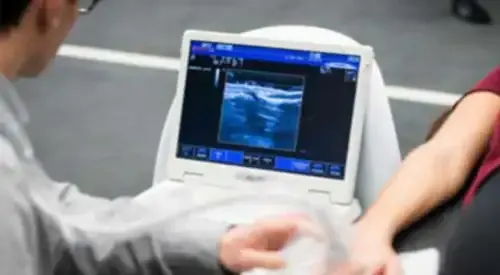Alopecia. Hair Loss
"The new generation of general anti-androgens and other pharmacological treatments allow us to expect more effective treatments for androgenic alopecia in the future".
DR. JAVIER ANTOÑANZAS
SPECIALIST. DERMATOLOGY DEPARTMENT

Alopecia is the abnormal loss of hair, so the term is considered a synonym for baldness.
It can affect the scalp or other areas of skin where hair is present, such as eyelashes, armpits, genital region and beard.
Alopecia can be classified into two groups: scar alopecia, with destruction of the hair follicle and therefore irreversible, and non-healing forms, which are potentially reversible.
The most common form is androgenic alopecia, also called androgenetic alopecia or common baldness, which is responsible for 95% of cases. It mainly affects men, and less frequently women.

What are the symptoms of alopecia?
The most common symptoms are:
- Loss of more than 100 hairs per day
- Weakening of the hair
Learn about the causes of different types of alopecia and their treatments (available in spanish)
Do you have any of these symptoms?
You may suffer from alopecia
What are the causes of alopecia?
In the cause of androgenic alopecia, two factors must be highlighted, the genetic and the hormonal. Although there is a hereditary component, the gene responsible is not known, since it is a dominant polygenic inheritance.
The hormonal factor depends primarily on male hormones or androgens that act on the hair follicles genetically predisposed to the condition, causing its progressive miniaturization to cause complete atrophy and fibrosis.
The cause of alopecia areata is not clearly defined, but it can be triggered by stress situations, and sometimes there can be an autoimmune background.
There are multiple causes of hair loss. A diet lacking in essential nutrients, thyroid problems, iron deficiency, infections, stress, anemia, excess of cosmetics (dyes, ...), are factors that collaborate with alopecia.
The side effects of some treatments can also cause hair loss, such as chemotherapy or radiation.
Types of alopecia
Non-healing alopecia
- Androgenetic alopecia: There are two patterns of affectation, the male with hair loss located mainly in the frontal and parietal areas that is initially manifested by the progressive delay of the anterior hairline, usually known as entrances, with later affectation of the vertex or crown region.
In the female pattern, hair loss is diffuse, there are no areas of total baldness and the anterior hairline is respected, that is, there are no hairline entries. - Alopecia areata: It is a type of hair loss that causes round patches. The hair follicles are not destroyed with this disease, so the hair can grow back, although it is very common relapses or recurrences in patients who have ever suffered.
- Traumatic alopecia: These are all those produced by physical traumas such as traction, pressure or trichotillomania.
- Diffuse alopecia: Diffuse alopecia consists of a hair loss more or less intense, acute or chronic, but reversible and not located in a certain portion of the scalp. The hair loss occurs between 2 and 4 months after the trigger. It occurs for example after childbirth, severe illness, febrile processes, stress or significant weight loss.
Scarring alopecia: This type of alopecia is usually irreversible because there is damage, malformation or total rupture of the follicular structure. They are classified as infectious, by physicochemical agents, tumors or dermatosis.
How is alopecia diagnosed?

For the diagnosis of alopecia, a thorough medical history should be taken.
Sometimes it is necessary to have an analysis aimed at detecting any alteration that justifies an increased hair loss.
In exceptional cases, and especially in inflammatory cicatricial alopecia, a scalp biopsy with its corresponding histopathological study should be used.
It is very important to carry out a thorough examination and diagnosis of each patient's hair loss, in order to determine exactly the reason for the hair loss and to choose the most effective treatment.
How is alopecia treated?
Pharmacological treatment must be prescribed and supervised by a dermatologist
The treatment will be established according to the cause of the alopecia.
There are two medicines that have proven in scientific studies their effectiveness in androgenic alopecia, minoxidil that is applied in the form of a solution on the skin and finasteride that acts by blocking the production of androgens and is administered orally in tablet form.
If it is found that there is a deficit of certain essential nutrients for hair formation, supplements based on sulphur amino acids, minerals and vitamins are added.
- In female androgenic alopecia cyproterone acetate has good results.
- In alopecia areata, corticoids (topical or infiltrated) and immunotherapy through the application of sensitizing substances such as difenciprone are effective.
Where do we treat it?
IN NAVARRE AND MADRID
The Department of Dermatology
of the Clínica Universidad de Navarra
The Department of Dermatology of the Clinica Universidad de Navarra has extensive experience in the diagnosis and treatment of dermatological diseases.
We have extensive experience in highly precise surgical treatments, such as Mohs surgery. This procedure requires highly specialized personnel.
We have the latest technology for the dermo-aesthetic treatment of skin lesions, with the aim of achieving the best results for our patients.
Diseases we treat

Why at the Clinica?
- Experts in Mohs Surgery for the treatment of skin cancer.
- We have the best technology for dermo-aesthetic treatments.
- Safety and quality assurance of the best private hospital in Spain.








